If you want to know about the laurie baker or norman foster or staircase design, please click the link.
Introduction
High-tech architecture, also known as structural expressionism, is a style of modern architecture that emerged in the 1970s. It is characterized by the use of industrial materials, such as steel and glass, and an emphasis on technology and innovation in design.
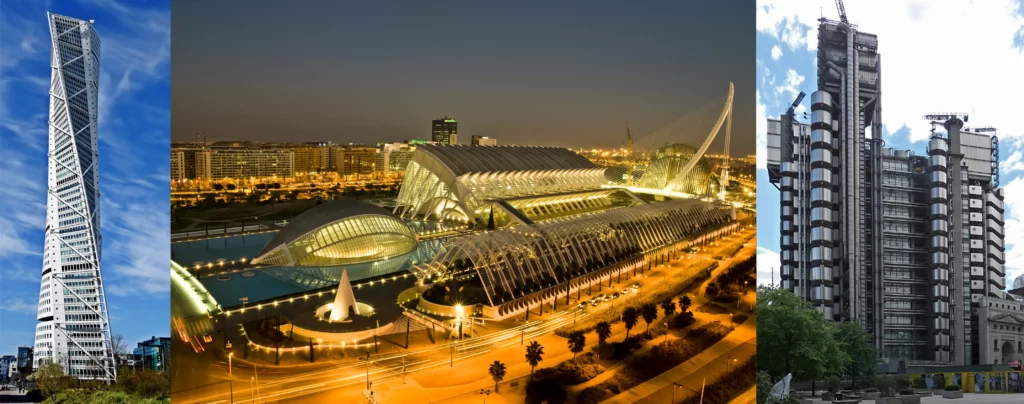
The origins of high-tech architecture can be traced back to the early 20th century and the works of architects such as Le Corbusier, who envisioned buildings as “machines for living”. However, it was not until the 1970s that the term “high-tech” was coined by the architectural historian Reyner Banham, who used it to describe the work of architects such as Richard Rogers, Norman Foster, and Renzo Piano.
These architects were influenced by the emerging technological and industrial advancements of the time and sought to incorporate these into their designs. They emphasized the use of exposed structural elements, such as beams and ducts, and integrated building services, such as air conditioning and plumbing, into the design.
The most iconic high-tech buildings of this era include the Pompidou Centre in Paris by Rogers and Piano, the Willis Faber and Dumas Headquarters in Ipswich by Foster, and the HSBC Building in Hong Kong by Foster and Partners.

High-tech architecture continued to evolve in the 1980s and 1990s with architects such as Santiago Calatrava and Frank Gehry pushing the boundaries of what was possible with new technologies and materials. Today, high-tech architecture continues to influence contemporary design, particularly in the areas of sustainable architecture and smart building technologies.
1) Characteristics of High-Tech Architecture
The emphasis on technology and innovation in high-tech architecture is one of its defining characteristics. Architects who follow this style often use the latest technologies and construction methods to create innovative and visually striking buildings. This includes the use of computer-aided design (CAD) software, digital fabrication techniques, and 3D printing.
Another key feature of high-tech architecture is the use of industrial materials such as steel and glass. These materials are often used for their strength and durability, as well as their modern and sleek appearance. Steel, for example, can be used to create large spans and cantilevers, while glass allows for transparency and natural light to flood into buildings.
High-tech architecture also emphasizes the exposure of structural elements in buildings. Instead of hiding structural components behind walls and ceilings, architects often choose to expose them as a design feature. This can include beams, columns, and ducts, which are left visible to create an industrial, “unfinished” aesthetic.
Finally, high-tech architecture often integrates building services into the design of a building. This means that components such as heating, ventilation, and air conditioning systems are incorporated into the building’s structure rather than being added as an afterthought. This allows for a more efficient use of space and resources, as well as a more streamlined and cohesive design.
2) Pioneers of High-Tech Architecture
Richard Rogers and Renzo Piano are two of the most prominent architects associated with high-tech architecture. They collaborated on several notable projects, including:
Pompidou Centre in Paris:
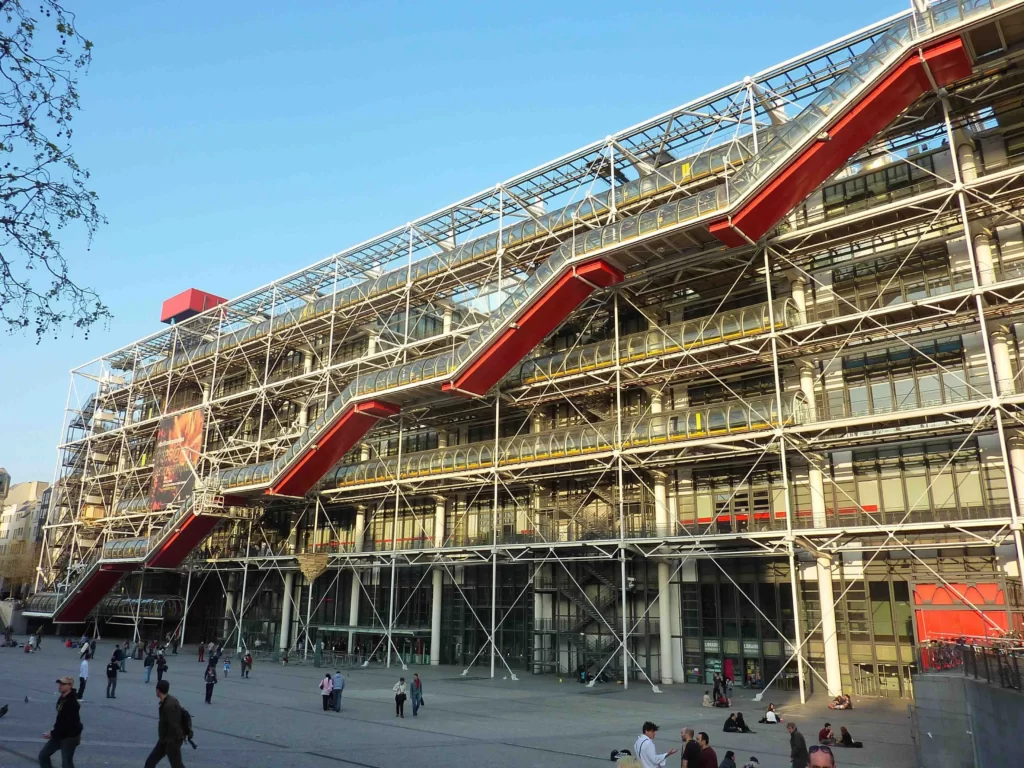
Completed in 1977, this cultural center is one of the most famous examples of high-tech architecture. Its structural system, which features a colorful exterior and exposed structural elements, was designed to express the building’s function and create a sense of transparency.
Lloyd’s Building in London:

Completed in 1986, this commercial building is known for its distinctive “inside-out” design, which features a steel frame and external service pipes that give the building an industrial aesthetic.
Norman Foster is another prominent architect associated with high-tech architecture. Some of his most famous buildings include:
HSBC Building in Hong Kong:

Completed in 1985, this 44-story skyscraper is known for its innovative design, which includes a steel frame that allows for large spans and the use of natural light to illuminate the interior.
The Gherkin in London:
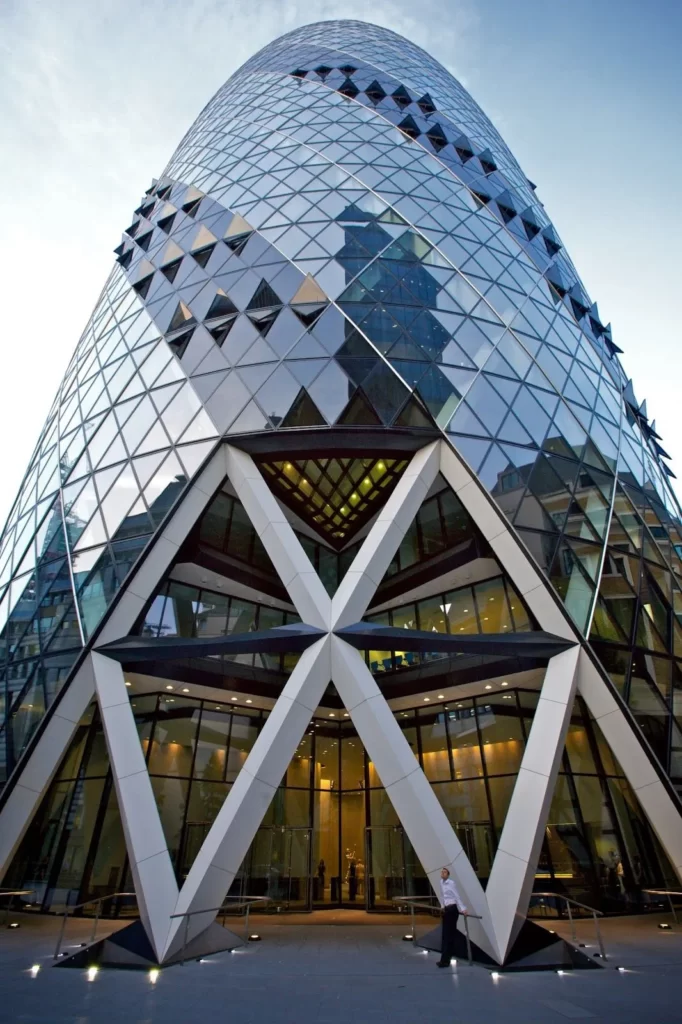
Completed in 2003, this iconic skyscraper features a distinctive cylindrical shape and a glass façade that reflects the surrounding cityscape.
Santiago Calatrava is a Spanish architect and engineer known for his innovative use of technology and materials. Some of his most famous buildings include:
Turning Torso in Malmo, Sweden:
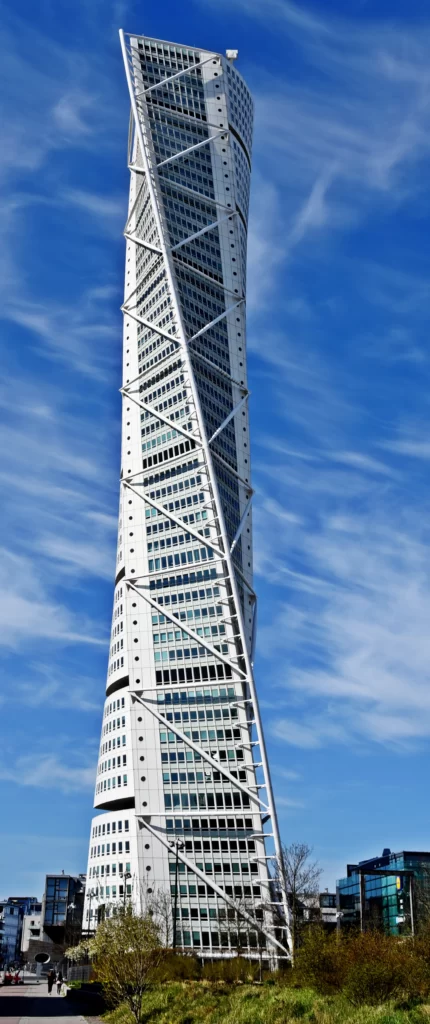
Completed in 2005, this residential tower is the tallest building in Scandinavia and features a unique twisting shape that gives it a dynamic appearance.
City of Arts and Sciences in Valencia, Spain:
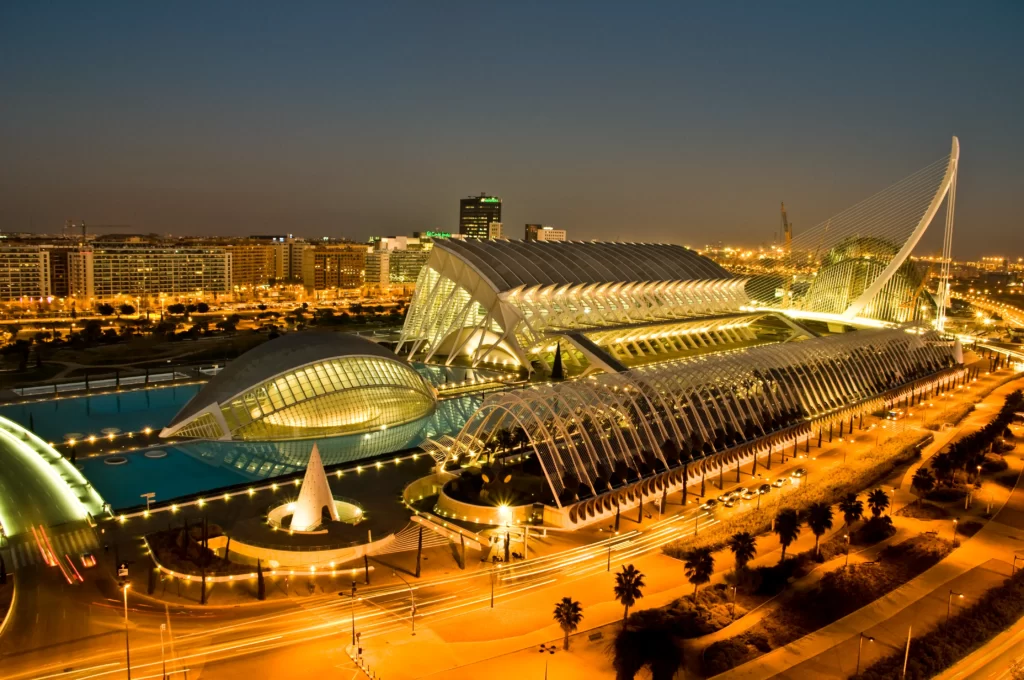
Completed in 2005, this cultural and entertainment complex features a series of futuristic buildings that are inspired by nature and technology.
All three architects have contributed significantly to the evolution of high-tech architecture and continue to push the boundaries of what is possible with technology and design.
3) High-Tech Architecture Around the World
Examples of high-tech architecture can be found all over the world. Some notable examples include:
- Burj Khalifa in Dubai, United Arab Emirates: Designed by Skidmore, Owings & Merrill, this 163-story skyscraper is the tallest building in the world and features a steel frame and glass curtain wall façade.
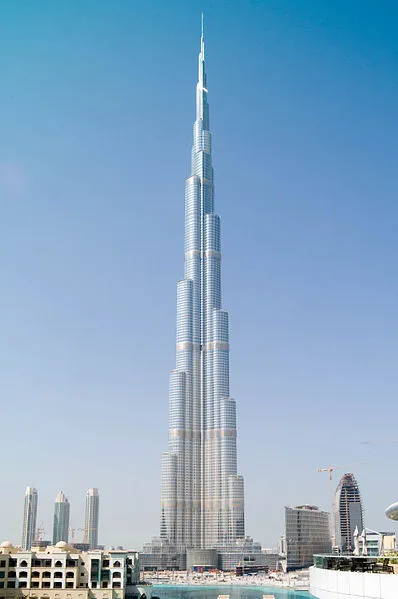
- Taipei 101 in Taipei, Taiwan: Designed by C.Y. Lee and Partners, this 101-story skyscraper features a unique “megacolumn” structure that allows it to withstand earthquakes and typhoons.

- Torre Glòries in Barcelona, Spain: Designed by Jean Nouvel, this former office building features a distinctive façade that incorporates solar panels and a louver system to control light and heat.
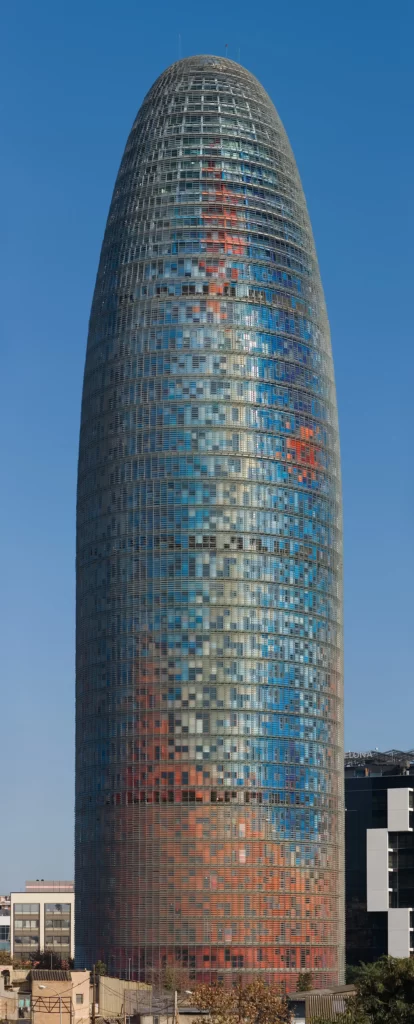
- The Shard in London, United Kingdom: Designed by Renzo Piano, this 95-story skyscraper features a unique triangular shape and a glass façade that reflects the changing colors of the sky.
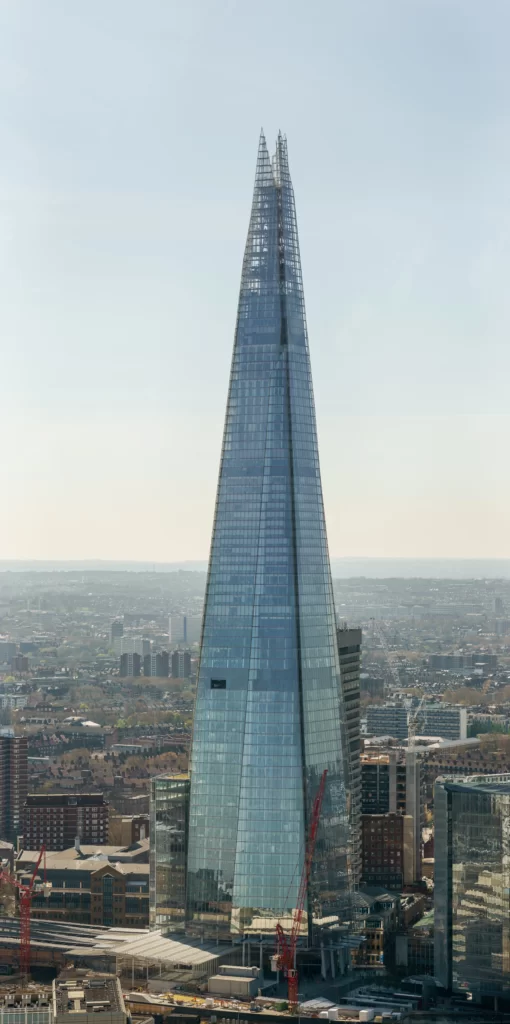
High-tech architecture has had a significant impact on global design trends. Its emphasis on technology and innovation has inspired architects around the world to incorporate new materials and construction techniques into their designs. The use of exposed structural elements and integration of building services into the design has also become more common in contemporary architecture.
In addition, high-tech architecture has influenced the development of sustainable design practices, such as the use of renewable energy sources and the integration of green spaces into buildings. This has led to the development of new technologies and materials that are more environmentally friendly and energy-efficient.
Overall, high-tech architecture has had a lasting impact on global design trends and continues to shape the way architects approach the design of buildings and spaces.
4) Sustainable High-Tech Architecture
Advancements in technology have played a significant role in enabling sustainable high-tech architecture. Some of the key advancements include:
- Solar power: The use of photovoltaic panels to capture and convert solar energy into electricity has become more efficient and cost-effective in recent years, making it an increasingly popular source of renewable energy for high-tech buildings.
- Building automation systems: The use of smart building systems that monitor and control energy use has become more widespread in high-tech architecture, allowing for more efficient use of resources and energy conservation.
- Digital fabrication: The use of digital fabrication technologies, such as 3D printing and CNC machining, has enabled architects to create more efficient and sustainable designs by minimizing waste and reducing the use of materials.
In addition, the use of green materials has become increasingly important in high-tech architecture. Some examples of green materials used in high-tech buildings include:
- Low-emissivity glass: This type of glass has a special coating that reduces heat transfer and improves energy efficiency.
- Recycled materials: Using recycled materials, such as reclaimed wood or recycled steel, can reduce the environmental impact of construction.
- Living walls: Incorporating living walls or green roofs into a building’s design can help to improve air quality, reduce heat island effects, and provide natural insulation.
Some examples of sustainable high-tech buildings include:
- The Edge in Amsterdam, Netherlands: Designed by PLP Architecture, this office building is considered one of the most sustainable in the world, featuring a range of advanced technologies and green features.
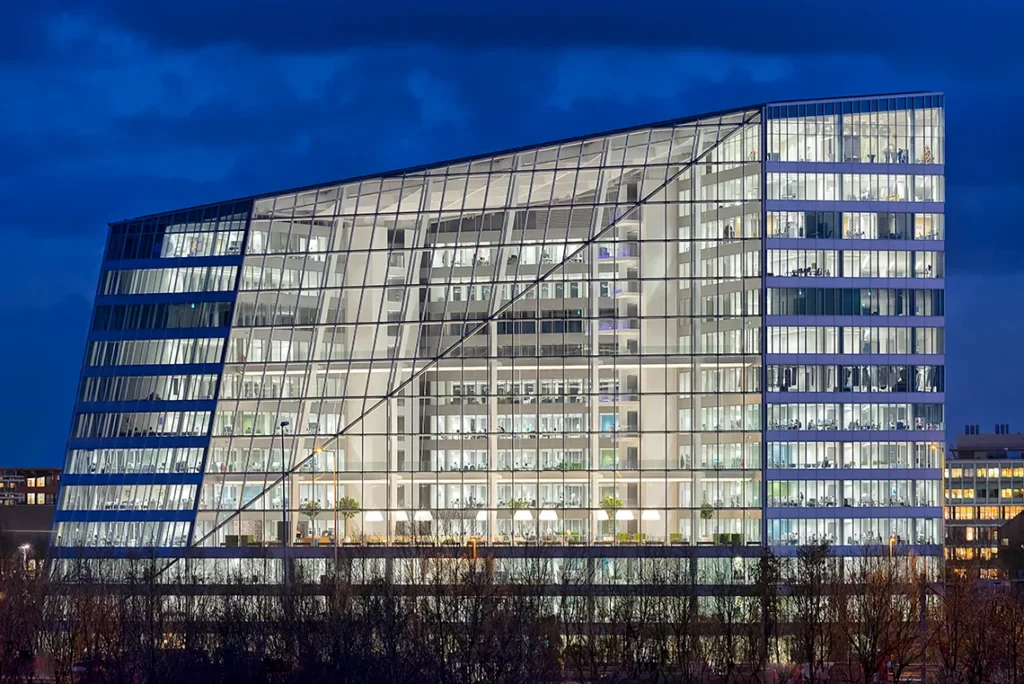
- Bullitt Center in Seattle, USA: Designed by Miller Hull Partnership, this six-story office building is designed to be net-zero energy and carbon neutral, featuring a range of sustainable technologies and materials.
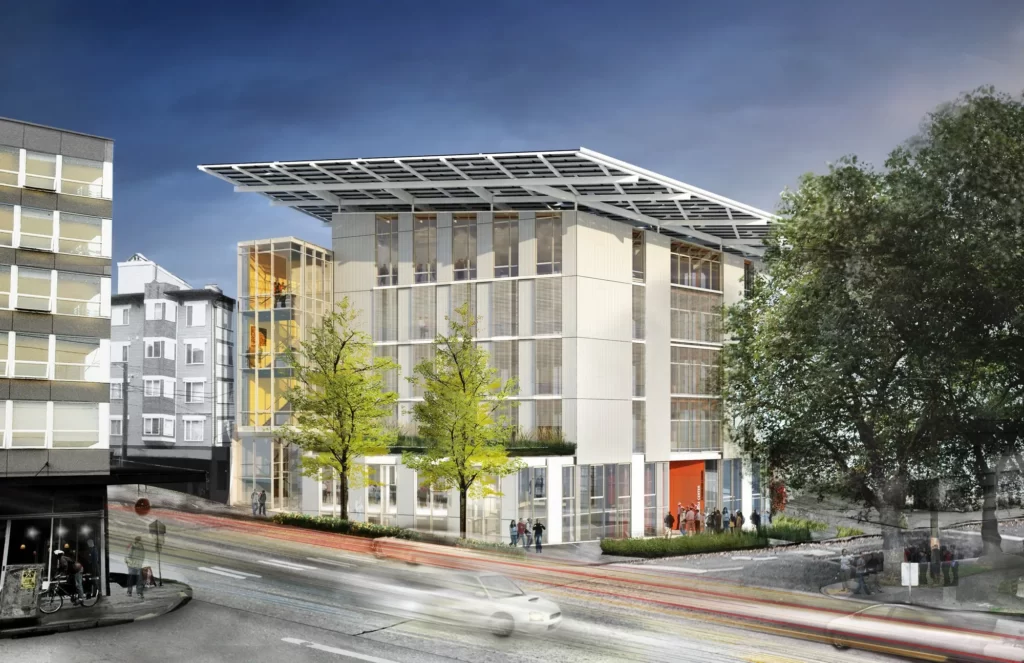
- Pixel Building in Melbourne, Australia: Designed by Studio 505, this sustainable office building features a range of green technologies, including solar panels, rainwater harvesting, and a living wall.
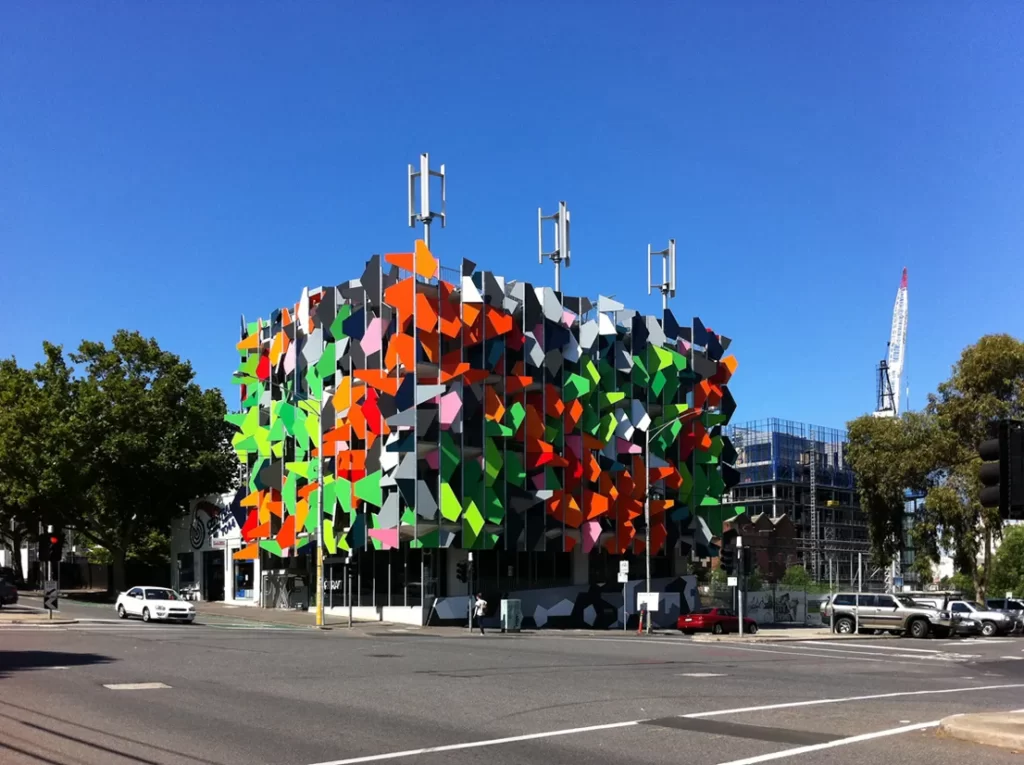
5) The Future of High-Tech Architecture
There are several emerging technologies that are likely to have a significant impact on high-tech architecture in the future. Some of these technologies include:
- Artificial intelligence: AI has the potential to revolutionize the way architects design buildings by providing tools for automated design, optimization, and performance analysis.
- Virtual and augmented reality: VR and AR technologies can help architects to visualize and test designs in virtual environments, enabling them to identify potential issues and make adjustments before construction begins.
- Advanced materials: Advances in materials science, such as the development of self-healing and self-cleaning materials, may lead to new possibilities for sustainable and efficient building design.
- 3D printing: The use of 3D printing for construction has already been explored in some projects and may become more common in the future, enabling architects to create more complex and customized designs with less waste and lower costs.
As for how high-tech architecture will evolve in the future, it is likely that there will be continued emphasis on sustainability and efficiency, with an increased focus on incorporating new technologies and materials into building design. The use of smart building systems and automation will become more widespread, enabling buildings to become more responsive and adaptive to their environment.
There may also be increased experimentation with new forms and shapes, as well as more integration of natural elements and biophilic design principles. High-tech architecture may also become more focused on the use of renewable energy sources and the development of net-zero energy buildings.
Overall, high-tech architecture is likely to continue evolving in response to technological advancements, societal needs, and environmental concerns, leading to the development of new and innovative building designs in the future.
6) Criticisms of High-Tech Architecture
While high-tech architecture has many advantages, it has also been subject to criticism. Some common criticisms of high-tech architecture include:
- Cold and impersonal: Some critics argue that the focus on technology and innovation in high-tech architecture can result in buildings that lack warmth and personality, feeling more like machines than places for human habitation.
- Expensive: High-tech architecture often involves the use of advanced technologies and materials, which can make it more expensive than other types of architecture. This can make it less accessible and exclusive to only those who can afford it.
- Unsustainable: Despite the focus on sustainability in high-tech architecture, some critics argue that the use of advanced technologies and materials can actually be less sustainable than more traditional building methods, due to the high carbon footprint associated with the production of these materials.
- Maintenance and repair: High-tech buildings often require specialized knowledge and equipment to maintain and repair, which can be costly and time-consuming.
- Lack of adaptability: The focus on advanced technologies and materials can sometimes result in buildings that are less adaptable to changing needs and uses over time, as they are designed to meet very specific requirements and functions.
Prioritizing technology over other design elements can also have potential downsides. For example, a building that is designed primarily around technology may not take into account the needs and preferences of its users, leading to a less comfortable or functional space.
Additionally, a focus on technology may lead to designs that are less responsive to their context and environment, as the technology is prioritized over the natural and cultural elements of the site.
Overall, while high-tech architecture has many advantages, it is important to consider the potential downsides and balance the use of technology with other important design elements, such as sustainability, user needs, and context.
7) Conclusion
In summary, high-tech architecture is a style of architecture that emphasizes technology, innovation, and industrial materials. It emerged in the 1970s and is associated with architects such as Richard Rogers, Renzo Piano, Norman Foster, and Santiago Calatrava. High-tech architecture has had a significant impact on global design trends, and its influence can be seen in buildings around the world.
One of the key advantages of high-tech architecture is its focus on sustainability and energy efficiency, with many high-tech buildings incorporating green materials and innovative systems to reduce their environmental impact. Another advantage is the flexibility and adaptability of high-tech buildings, which can be designed to respond to changing needs and uses over time.
Despite its many advantages, high-tech architecture has also been subject to criticism for being cold and impersonal, expensive, and less sustainable than traditional building methods. Additionally, a focus on technology can sometimes lead to designs that are less responsive to context and user needs.
However, despite these criticisms, high-tech architecture remains relevant today due to its ability to incorporate new technologies and materials into building design, its focus on sustainability and energy efficiency, and its flexibility and adaptability. As technology continues to advance, it is likely that high-tech architecture will continue to evolve and influence global design trends in the future.